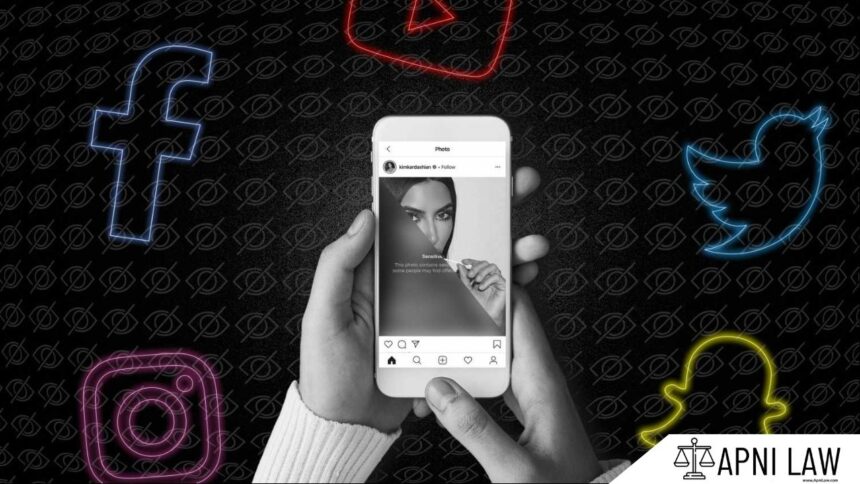This article is written by Anna Mutungura, a dedicated law student with a keen interest in Indian and international law. She aspires to specialize in these areas and is passionate about using her knowledge to help others navigate legal complexities. For any personal queries or suggestions, feel free to reach out to us through our official channel or through contact no. +91 – 8569843472
Introduction
The arrival of the internet has deeply embedded technology into our daily lives, from connecting with loved ones to working, learning, and shopping online. But this same digital progress has opened dangerous avenues, particularly for women and children. Cyberstalking, photo manipulation, and digital bullying are not merely technical violations, they are deeply personal and emotionally damaging.
To address these threats, India’s judicial framework has evolved to include laws designed to protect women and children from cybercrimes. This comprehensive guide outlines the common types of cybercrime, legal protections available, and how victims can report these offenses.
Common Forms of Cybercrime Against Women and Children
1. Cyberstalking
Cyberstalking involves the use of digital tools to repeatedly harass or follow someone. This can occur via email, social media, or messaging apps. Victims mostly women, often feel violated, fearful, and constantly watched, leading to anxiety and mental stress.
2. Cyberbullying
Cyberbullying is the deliberate and repeated misuse of digital communication to threaten, harass, or humiliate individuals, especially children and teenagers. Its impact ranges from emotional distress and social isolation to long-term psychological harm. While the POCSO Act covers cyberbullying when it affects minors, provisions in the Information Technology Act and BNS also provide support by penalizing harassment and abuse through digital platforms.
3. Deepfakes and Morphed Images
Deepfakes are digitally altered images or videos that make it appear as if someone said or did something they never did. When these are created with sexual intent, they become a powerful weapon for blackmail and public humiliation. These acts may be punishable under the IT Act for publishing obscene content or under BNS for criminal intimidation, defamation, and identity misuse.
4. Online Grooming
Online grooming involves a predator using fake identities to gain a child’s trust and then manipulate them into sharing private or explicit content. It is a slow psychological trap that can lead to exploitation, threats, and abuse. Grooming of children is directly addressed under the POCSO Act, with support from the IT Act and BNS for digital evidence and penalization.
5. Impersonation and Fake Profiles
Creating fake profiles on social media using someone else’s identity is a serious crime. It can lead to reputational damage, harassment, and emotional trauma for the victim. The IT Act punishes digital impersonation, while BNS includes updated provisions on identity theft and online fraud.
Legal Protection for Women and Children
India’s cyber laws and criminal justice system work together to safeguard vulnerable internet users.
Information Technology Act, 2000 (Amended)
The IT Act is the cornerstone of India’s cyber legal framework. It criminalizes actions like publishing sexually explicit material (Sections 67 & 67A), identity theft and fraud (Sections 66C & 66D), and violation of privacy (Section 66E). These provisions are vital in cases of cyberbullying, deepfakes, and online harassment.
Bharatiya Nyaya Sanhita (BNS), 2023
Replacing the Indian Penal Code, the BNS includes updated language and provisions that better reflect crimes in the digital age. It introduces stricter guidelines for stalking (including online), impersonation, and publication of obscene content. BNS plays a crucial role by framing these digital crimes with appropriate punishments, thereby filling the gaps left by outdated laws.
Protection of Children from Sexual Offences (POCSO) Act, 2012
POCSO is specifically aimed at protecting minors from sexual exploitation and abuse. It covers online grooming, pornography involving children, and digital communications used to exploit minors. It also ensures that electronic evidence like chats, images, or social media records can be used in legal proceedings. However, it works best when supported by enforcement under the IT Act and BNS.
IT Rules, 2021 (Intermediary Guidelines and Digital Media Ethics Code)
The IT Rules empower the government and users to hold digital platforms accountable. They mandate:
- Quick takedown of offensive content upon complaint
- Appointment of grievance redressal officers
- Publication of periodic transparency reports
This regulatory mechanism ensures social media platforms and intermediaries act swiftly against harmful content, particularly those affecting women and children.
Steps to Report Cybercrime in India
Step 1: Collect Evidence
- Take screenshots of offensive messages or images
- Note usernames, timestamps, and platform names
- Preserve all data before approaching authorities
Step 2: Report Online
- Visit the National Cybercrime Reporting Portal: https://cybercrime.gov.in
- Select “Report Women/Child Related Crime”
- Fill in the required details and upload the collected evidence
Step 3: Visit the Police or Cyber Cell
- Register a First Information Report (FIR)
- For women and children, privacy and confidentiality are assured
Step 4: Seek Support Services
- 1091 – Women’s Helpline
- 1098 – Childline (for children in distress)
- Legal aid clinics and NGOs offer free emotional and legal assistance
Tips to Prevent Cybercrime
- Set your social media privacy settings to “friends only”
- Avoid oversharing personal information or photos online
- Don’t accept friend requests from unknown people
- Use strong and unique passwords for each account
- Enable two-step verification wherever possible
- Teach children how to safely use the internet and encourage them to report any discomfort
Conclusion
While the internet opens up vast opportunities, it also poses real risks, particularly for women and children. Nonetheless, with sound legal protections, responsible digital conduct, and strong enforcement mechanisms like the IT Act, BNS, and IT Rules, we can collectively build a safer online environment. Raising awareness and taking prompt action are essential steps in reclaiming digital spaces for all.







